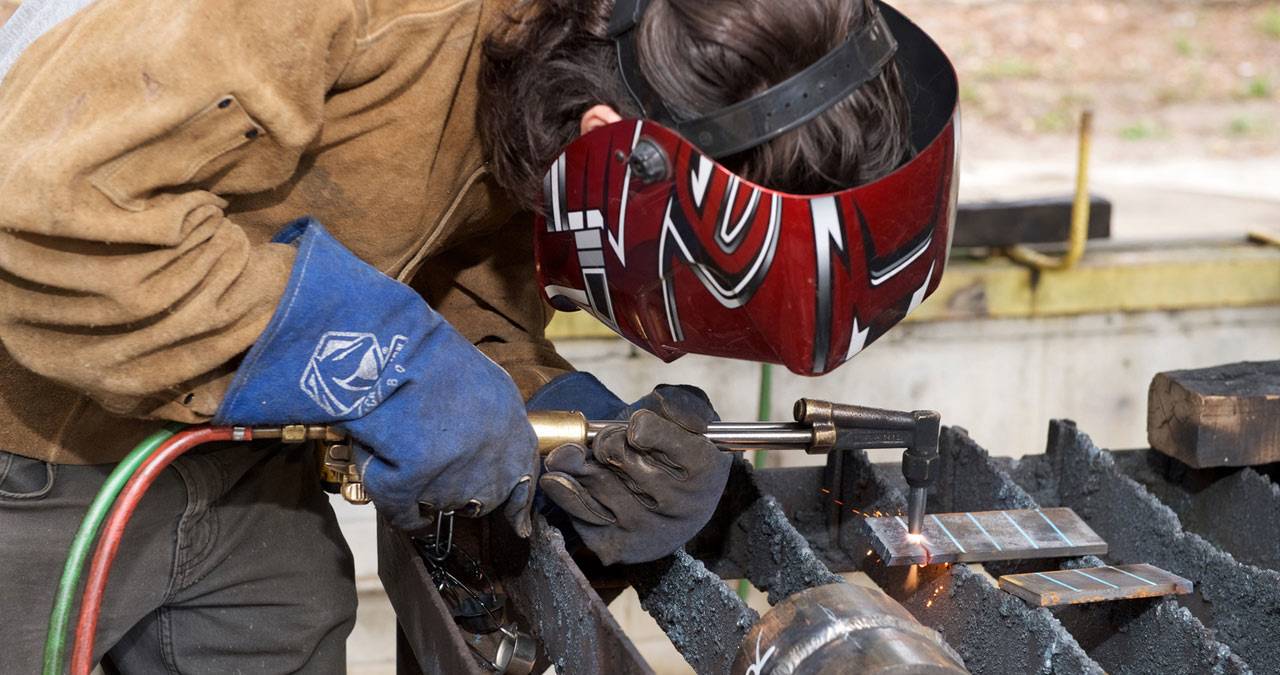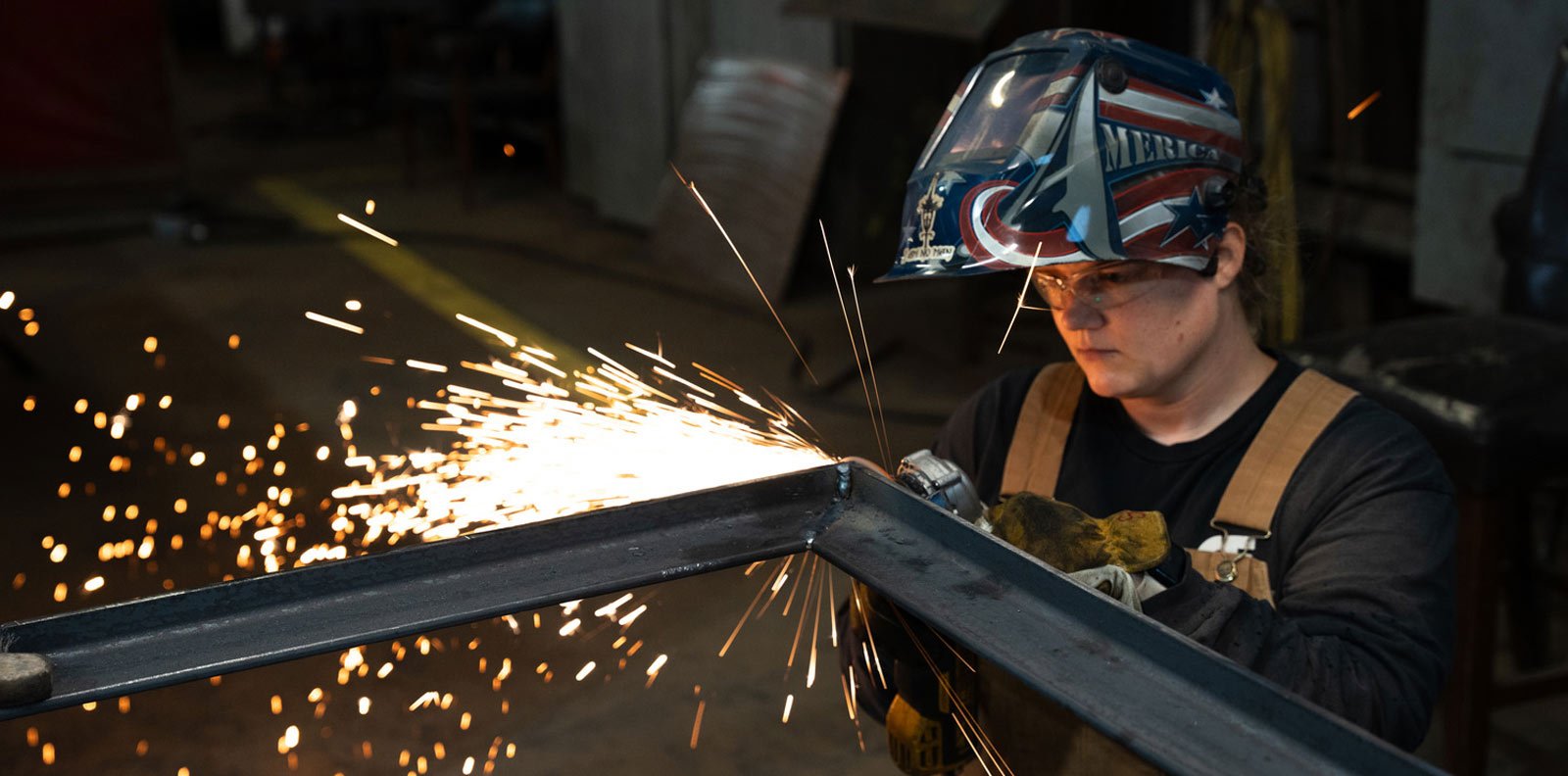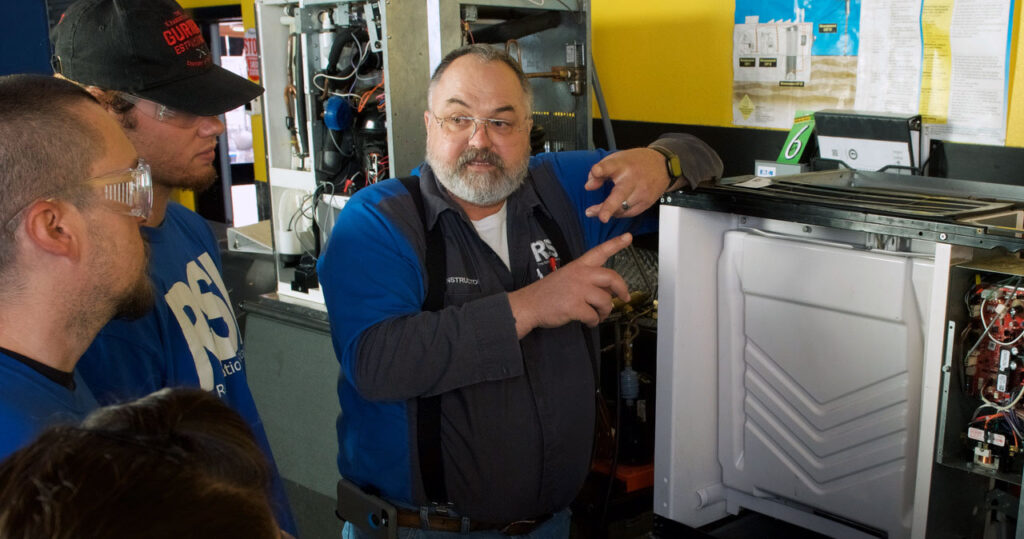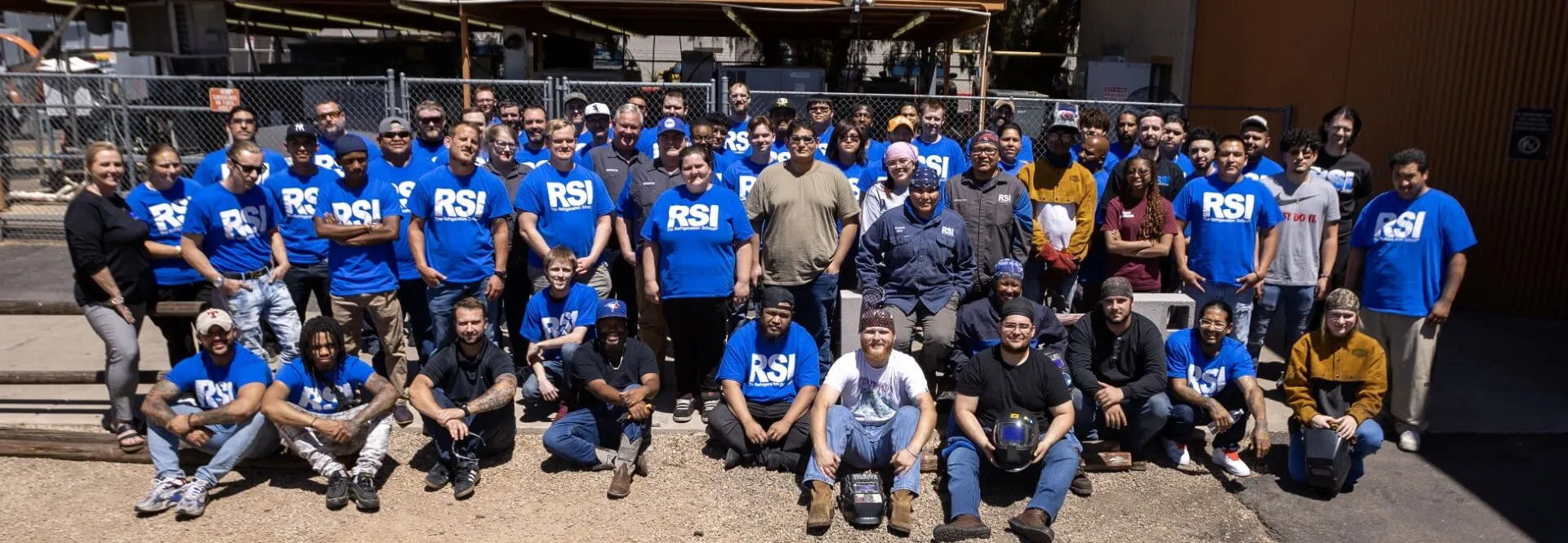RSI is a Great Training Option for Everyone
Learn more about how we can prepare you to advance your career.
Fabricators are like metal sculptors. They weld, cut, bend, and shape raw materials. Using tools, they turn simple metal pieces into working machines, product prototypes, tools, or structures. You will find them in shops, manufacturing plants, factories, and on job sites. So, what is metal fabrication?
What is Metal Fabrication?
Metal fabrication is a skilled trade that involves the process of turning raw metal into parts for many different applications. Fabrication involves cutting, shaping, bending, and assembling metal. You’ll find metal fabricators behind the creation of a wide range of items like car frames, product prototypes, building structures, and kitchen sinks.
What are the Main Duties and Responsibilities of a Fabricator?
Metal fabricators are responsible for many job duties in their day-to-day that include:
Welding Parts Together
Metal fabricators commonly join components using techniques such as welding, bolting, riveting, and, in some specialized cases, fastening with industrial staples. Each method is chosen based on the material type, structural requirements, and application.
Welding is the most prevalent in metal fabrication and includes processes like MIG (Gas Metal Arc Welding), TIG (Gas Tungsten Arc Welding), and Stick (Shielded Metal Arc Welding). These techniques allow for strong, permanent joints capable of withstanding structural loads, thermal expansion, and vibration.
Get Started on the Path to a New Career
Fill out our form to learn how we can help you change your life.
For example, MIG welding is often used for fabricating steel frames due to its speed and efficiency, while TIG welding is preferred for precision work on thinner materials like aluminum. Understanding which method to use—and how to execute it properly—is a core part of training in programs like the Welding program at RSI, where students gain hands-on experience with industry-standard equipment and real-world fabrication scenarios.
Bending and Shaping Metal
Many metal fabrication projects require shaping flat metal into precise curves, angles, or complex forms. To achieve this, fabricators use specialized equipment such as press brakes, plate rolls, and angle rollers. A press brake uses a punch and die set to apply controlled force, allowing fabricators to make accurate bends at specific angles without compromising the metal’s structural integrity. Rollers are used to create consistent curves by gradually shaping the metal as it passes through a series of adjustable rolls.
For example, a fabricator might use a press brake to bend 0.125″ aluminum sheet into 90-degree brackets for HVAC duct support or use a plate roller to curve a stainless steel panel for a custom tank or enclosure. Understanding the material’s thickness, bend radius, and grain direction is essential to prevent cracking or distortion during forming.
Reading and Following Blueprints
Fabricators must understand how to read blueprints and technical drawings to know what to build.
- Blueprints provide essential information such as exact measurements, material types, and assembly instructions.
- Technical drawings, often included within or alongside blueprints, are detailed visual representations of objects or structures. They include precise dimensions, views from multiple angles (such as top, side, and isometric perspectives), and specifications like weld symbols, tolerances, and material finishes.
For example, a metal fabricator may use a technical drawing to understand how various steel components of a custom chair fit together. The drawing might show exact cut lengths, hole placements, bend angles, and welding points—allowing the fabricator to accurately cut and assemble each part according to the design. Mastery of technical drawings ensures the final product meets design standards and functions as intended.
Measuring and Cutting Metal Parts
Precision in measuring and cutting is critical in metal fabrication, as even small errors can compromise the fit, function, or structural integrity of the final product. Fabricators rely on tools like steel rules, calipers, combination squares, and angle finders to take exact measurements. For cutting, they may use band saws, plasma cutters, oxy-acetylene torches, or hydraulic shears, depending on the material type and thickness. Every cut must align with the specifications outlined in the technical drawings—mistakes at this stage can lead to costly rework, misaligned assemblies, or failed welds down the line.
Inspecting Finished Products
Every metal fabrication is checked for accuracy and quality. Fabricators use non-destructive testing and tools like calipers, gauges, or visual checks to find defects. Inspections help catch problems early. For example, a fabricator may check a metal cabinet to make sure all corners are square, and surfaces are flush.
Keeping a Clean and Safe Work Area
Clean, organized workspaces help avoid accidents. Fabricators are expected to store tools properly, remove hazards, clean up scrap metal, and follow safety rules. For example, a fabricator will sweep metal shavings off the floor and put away tools at the end of a shift.
How Do You Become a Metal Fabricator?
Here’s a step-by-step guide to starting a career as a metal fabricator:
Step #1: Finish High School or Get a GED
To apply to a trade school like the Refrigeration School Inc. (RSI) you will need a high-school diploma or GED. If you’re a recent or soon-to-be high-school graduate, we’ve got outside solutions to help you apply.
Step #2: Enroll in a Welding Program
RSI offers hands-on welding training that teaches cutting, bending, shaping, and joining metal, the core skills for metal fabrication. During the Welding program at RSI, you will learn MIG, TIG, and stick welding, blueprint reading, and fabrication basics.
Step #3: Practice Hands-On Skills
During training at RSI, you will spend time using industry standard tools and machines, and build projects that mirror what you will complete when you start your new career. Plus, RSI’s lab time gives you that experience and guidance you need to succeed on day one.
Step #4: Earn Certifications
Certifications show employers you meet industry standards. RSI prepares you for the following welding certifications:
- OSHA 10 card
- AWS (American Welding Society) Certification
Step #5: Apply for Entry-Level Jobs
The last step in the process of becoming a metal fabricator is finding an entry-level job. Fortunately, RSI is here to help. We offer student services like resume building skills and interview preparation, plus we match you with jobs you are passionate about. Our goal is to help jumpstart your career as a metal fabricator.
Want To Learn More?
Learning the important concepts of welding like welding metallurgy starts with enrolling in RSI’s Welding Specialist program. To learn more, contact us.




